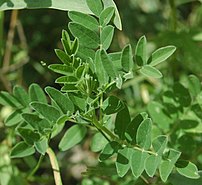[amazon_link asins=’1170116868,B015NSFNXM,B000ENKO1S,B01HGWKGR6,B004F7WZZW,B0058ABGD2,B00O83X700,B00T5E9E4A,B00854L76O’ template=’ProductCarousel’ store=’finmeacur-20′ marketplace=’US’ link_id=’33ae31dd-2fcb-11e7-856e-2f54415ad5ac’]
Botanical Name :Cornu Cervi Parvum
Family: Orchidaceae
Subfamily: Epidendroideae
Genus: Phalaenopsis
Species: P. cornu-cervi
Kingdom: Plantae
Order: Asparagales
Pinyin Mandarin Name: Lu Rong
Synonyms : Phalaenopsis devriesiana
Common English Name: Velvet of Young Deer Horn
Part of Plant Used: Velvet of the horn
Nature: Warm
Taste : Sweet, salty
Habitat :Cornu Cervi is native to Burma, Borneo, Java, Moloca, Sumatra, Thailand.
Plants grow on trees trunks in the dense forest in India, Myanamar, Thailand, Laos, Vietnam, Nicobar Islands, Malaysia, Java, Borneo, Sumatra, and the Philippines at elevations of 1000 meters and below.
Description:
The very rare red form of Phal. cornu-cervi, the form known as fma. chattaladae, awarded a Silver Medal by the Taiwan Orchid Growers’ Association ! This form of the species is distinct in its solid suffusion of red pigment over every segment of the flower, as opposed to many which are actually Phal. cornu-cervi var. rubescens, where the yellow background of the flower is actually visible on the lateral sepals. These plants can flower and re-flower on the same flattened spikes for several years, so don’t remove them until they have turned brown. A fully mature plant can carry over 6 flowering spikes of fragrant flowers at a time, each spike blooming several times during a single year. Very Highly Recommended.
click & see the pictures
Plant flowers in the spring to fall with 9 to 12 flowers. Flowers are fragrant and 3 to 5 cm wide. The chromosome number is 2n = 38.
The plant was first described by Breda as Polychilos cornu-cervi in 1827. The plants were first cultivated in England by Messrs. Low & Co. when Rev. C. S. brought several plant back in living condition in 1864
Meridians Entered: Liver, Kidneys
Medicinal Usages:
This herb is used in formulas to treat anemia after chronic disease, impotence, and weakness of back and knees with cold intolerance; also used to treat children for failure to thrive, mental retardation, learning disabilities, and skeletal deformities (TCM: deficient :Yang, deficient Blood, and deficient Kidney Yang; deficient Essence).
Click for more information
Traditional Usages and Functions
Tonifies Kidneys and fortifies Yang; tonifies the Governing Channel, benefits Essence and Blood, and strengthens sinews and bones; bolsters the Penetrating and Conception Channels and strengthens the Girdle Channel; tonifies and nourishes Qi and Blood.
Processing is Required for proper use.
Cautions in Use: Do not use this herb when there is a strong Yin deficiency or heat signs caused by Yin deficiency.
Disclaimer : The information presented herein is intended for educational purposes only. Individual results may vary, and before using any supplement, it is always advisable to consult with your own health care provider.
Resources:
http://www.acupuncture-and-chinese-medicine.com/cornu-cervi.html
http://www.phals.net/cornu-cervi/index_e.html
http://www.orchids.com/Phal-cornu-cervi-f-chattaladae-Red-Wan-Chiao-SMTOGA-x–P4208.aspx
http://orchids.wikia.com/wiki/Phalaenopsis_cornu-cervi
http://en.wikipedia.org/wiki/Phalaenopsis_cornu-cervi

















